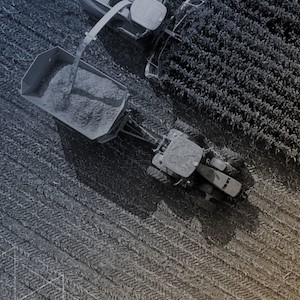Agricultural Robotics Segment Maturing Amid Intermittent Commercialization

FIRA’s exhibition features purpose-built autonomous robots designed for specific applications on farms, vineyards, and glass houses.
The robotics sector is littered with predictions that haven’t materialized: flying cars, autonomous transportation, and household robots that offer domestic help all have been greatly delayed. In agriculture, technology introductions have sputtered for numerous reasons: A prolonged global recession dating back to 2008 slowed investment, lack of interoperability standards created disparate ecosystems, and products focused too much on the technology instead of addressing real-world grower problems and workflows.
But those dynamics are changing for the better, and real change is starting to creep into the market as leading companies are on the cusp of changing the trajectory of innovation and adoption.
Here’s why: Partnerships and collaboration among leading companies are accelerating innovation and speed to market. Start-up culture historically has been a lonely endeavor as inventor companies cautiously guard proprietary advancements amid competition from inside and outside of agriculture. But that is changing for a couple reasons, primarily because technical and operational challenges are too complex for any one company to create a complete platform. Robotics, which implies autonomy, require sophisticated mechanization and software. Mechanization requires a supply chain, and software requires interfaces for interoperability. Many companies have tried to create a ground-up platform internally, but the complexity has rendered this approach unfeasible.
It shows a great deal of business maturation for start-ups to seek partnerships and joint ventures to accelerate product lifecycles and commercialization, and that business maturity will help garner more investment
MORE BY DAVID FRABOTTA
Carbon Credits, Agtech Investment Trends Among Key Topics Addressed by AGvisorPRO CEO
Autonomous Functionality in Farming Is Already Here in Many Ways
FIRA, the International Forum of Agricultural Robotics, has been the conference and exhibition for emerging technologies that showcase the development of robotics technologies around the world. Its most recent event, now in its fourth year, welcomed more than 800 attendees from 42 countries to Toulouse, France, in December. FIRA is now organized by the Global Organization For Agricultural Robotics (GOFAR), an independent, nonprofit created in 2019 to promote agriculture robotics.
The founding company behind FIRA and now GOFAR is Naio Technologies, makers of autonomous weeding robots with a global development and expansion plan. Naio secured $15.5 million in Series A funding in January, a whopping sum for EU venture capital standards. The company’s last round of financing was for about $3.5 million in 2015, so this new cash infusion will help the company accelerate mass production, a step in commercialization that has been exceedingly slow for autonomous farm machines thus far. Naio’s Dino platform has significant upside and potential in operations of various sizes.
Other highlights include:
- Spoutnic NAV robots by Tibot Technologies limit the drudgery of work for the poultry farmers while improving the profitability of their farm and stimulating animal welfare.
- Faromatics’ ChickenBoy, the worldwide first ceiling-suspended robot that monitors animal welfare and helps increase farm productivity.
- E-tract by Rhoban System is an autonomous electric tractor that can operate with Tract’elec, thus providing a smooth transition from today’s conventional tractor to the autonomous robot of tomorrow.
- VitiBot’s Bakus robot for vineyards expands its range of electric and connected tools. Currently being tested with the Champagne Committee, the contained sprayer and recycling system are in development.
- Sitia’s Trektor for viticulture is the first versatile and hybrid agricultural robot in France. Its design allows, with the same product, to address different markets of viticulture, market-gardening, open-field vegetable crop, and arboriculture.
- Sentinal by Dussau Distribution is the first bedding robot with Artificial Intelligence. Its functions make it the eyes and arms of the farmer who remains the only decisionmaker.
The two-day conference featured 30 speakers that discussed robotic innovations for specialty crops, broad-area crops, indoor cultivation, animal production, pest detection, ethics in robotics, and the supply channel.










